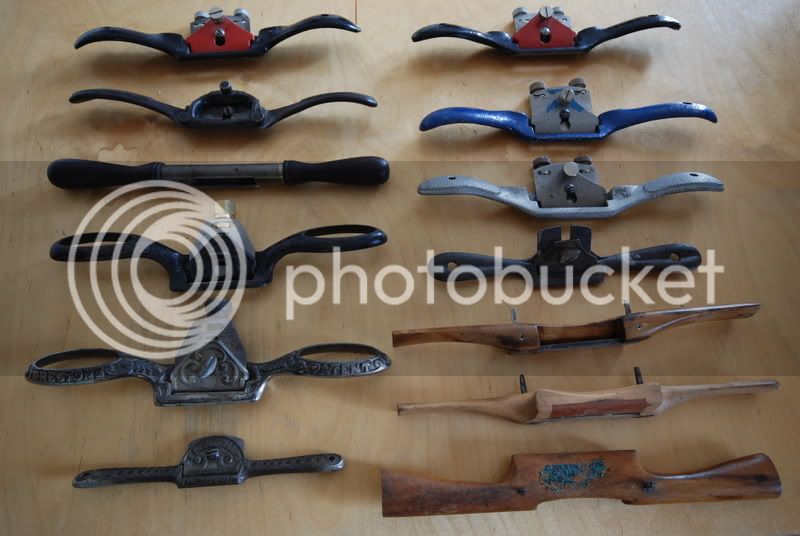WiZeR,
When you are in better shape you are welcome to pop over and give some shaves a try (my collection is much like Pete’s). I also have 151s in various ‘levels’ of tune/expense and some high end modern stuff to compare them with. Sounds like Pete and I have trodden a very similar path…
There are as far as I know three sharpening guides that will hold a 151 blade (or similar) without modification. The Veritas Mk 2, Richard Kell #2 and the Stanley 81-050. The Stanley is most usually found bundled with an oil stone and oil these days. Veritas sell a small blade holder that is supposed to hold spokeshave blades in a Mk 1 guide but it only really works with their small low angle blade.
As a rule flat based shaves are easier to make work than curved sole shaves. Aslso as a rule, earlier shaves make a better starting point than modern ones.
A 151 can be made to work fairly well cheaply and very well expensively. There can’t be many tool boxes or tool draws across the land that don’t have a neglected and useless 151 lurking in their darker recesses. More than any other spokeshave this model has earned spokeshaves in general a reputation as being difficult but a well sorted one is a joy to use.
I think a well prepared low angle wooden shave is even better but that is as subjective as bevel up compared to bevel down bench planes…
Jon.





































